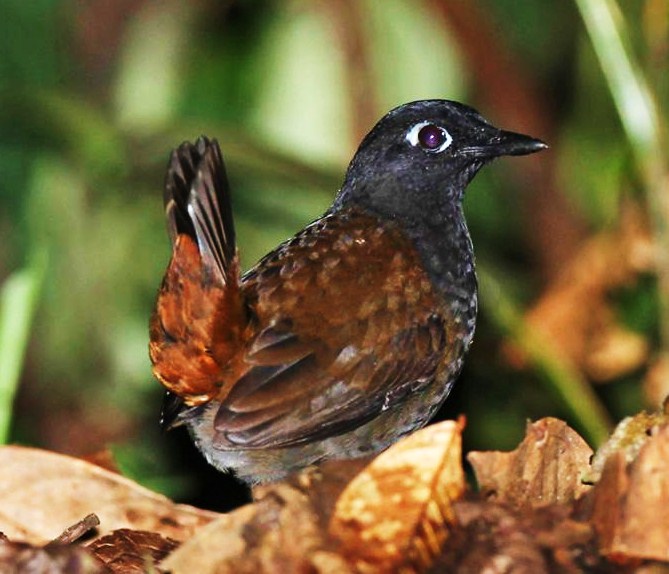Formicarius nigricapillus
 |
| Photo by José Ardaiz (Internet Bird Collection) |
Common name:
black-headed antthrush (en); pinto-do-mato-cabeça-preta (pt); tétéma à tête noire (fr); formicario cabecinegro (es); schwarzkopf-ameisendrossel (de)
Taxonomy:
Order Passeriformes
Family Formicariidae
Range:
The black-headed antthrush is found from the Caribbean slope of Costa Rica, through both slopes of Panama and into the Pacific coast of Colombia and Ecuador.
Size:
They are 20-22 cm long and weigh 70 g.
Habitat:
These birds are found in tropical and sub-tropical moist forests, both in lowland areas and in mountainous areas up to an altitude of 900 m.
Diet:
Black-headed antthrushes are insectivorous, mostly eating ants and other insects like crickets, grasshoppers and beetles.
Breeding:
These birds seem to be monogamous and mate for life. They nest in trees and the female lays 2 eggs which are incubated for 20 days. The chicks leave the nest soon after hatching and follow their parents about, seeking food and shelter, fledging about 18 days after hatching.
Conservation:
IUCN status – LC (Least Concern)
The black-headed antthrush has a very large breeding range, but is described as uncommon. This population is suspected to be in decline owing to ongoing habitat destruction, but it is not considered threatened at present.







